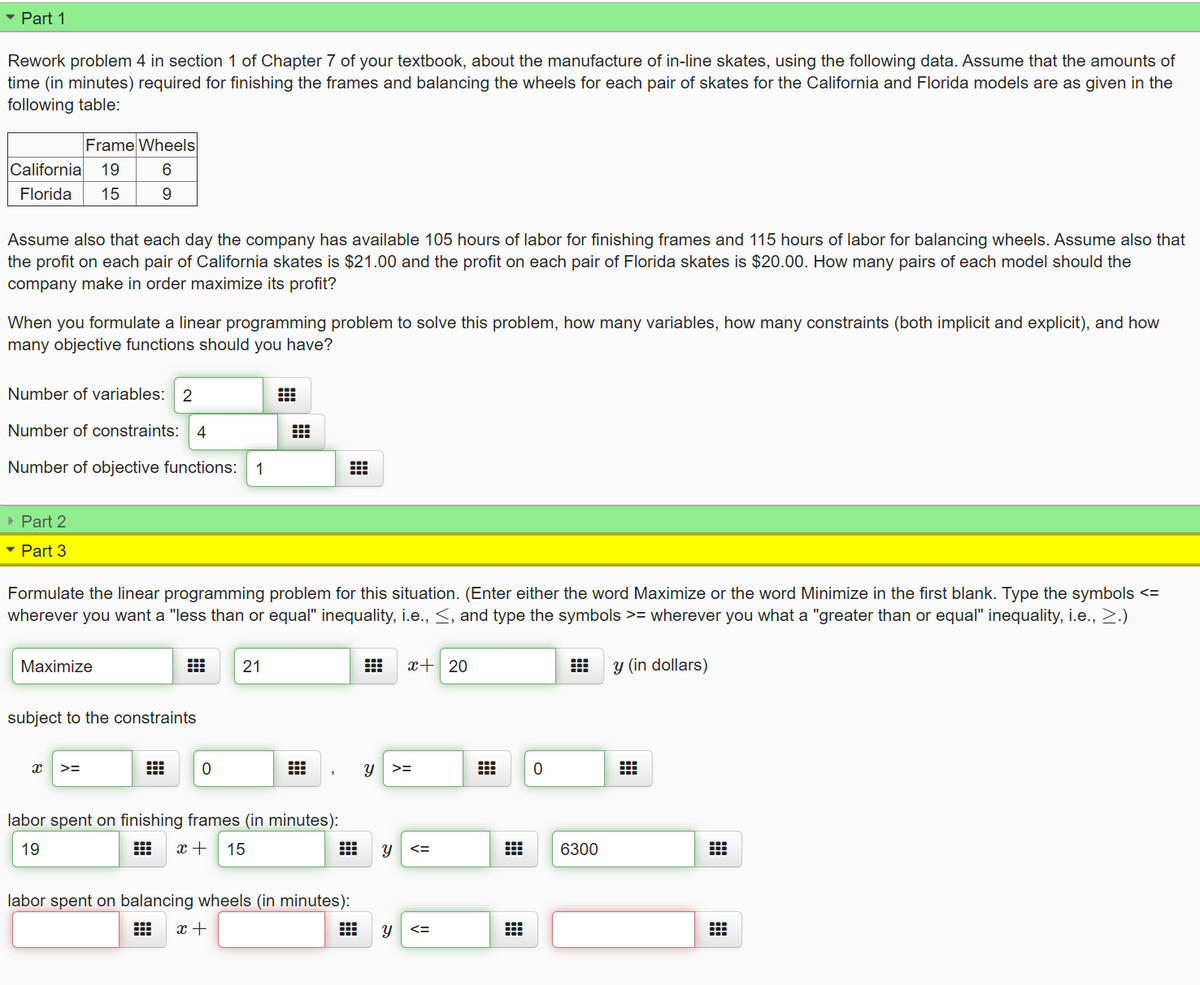- Part 1 Rework problem 4 in section 1 of Chapter 7 of your textbook, about the manufacture of in-line skates, using the following data. Assume that the amounts of time (in minutes) required for finishing the frames and balancing the wheels for each pair of skates for the California and Florida models are as given in the following table: Frame Wheels California 19 6 Florida 15 9 Assume also that each day the company has available 105 hours of labor for finishing frames and 115 hours of labor for balancing wheels. Assume also that the profit on each pair of California skates is $21.00 and the profit on each pair of Florida skates is $20.00. How many pairs of each model should the company make in order maximize its profit? When you formulate a linear programming problem to solve this problem, how many variables, how many constraints (both implicit and explicit), and how many objective functions should you have? Number of variables: 2 Number of constraints: Number of objective functions: Part 2 - Part 3 Formulate the linear programming problem for this situation. (Enter either the word Maximize or the word Minimize in the first blank. Type the symbols <= wherever you want a "less than or equal" inequality, i.e., <, and type the symbols >= wherever you what a "greater than or equal" inequality, i.e., 2.) Maximize 21 x+ 20 y (in dollars) subject to the constraints >3D >= labor spent on finishing frames (in minutes): 19 x + 15 6300 labor spent on balancing wheels (in minutes): x + y <=
Correlation
Correlation defines a relationship between two independent variables. It tells the degree to which variables move in relation to each other. When two sets of data are related to each other, there is a correlation between them.
Linear Correlation
A correlation is used to determine the relationships between numerical and categorical variables. In other words, it is an indicator of how things are connected to one another. The correlation analysis is the study of how variables are related.
Regression Analysis
Regression analysis is a statistical method in which it estimates the relationship between a dependent variable and one or more independent variable. In simple terms dependent variable is called as outcome variable and independent variable is called as predictors. Regression analysis is one of the methods to find the trends in data. The independent variable used in Regression analysis is named Predictor variable. It offers data of an associated dependent variable regarding a particular outcome.

Trending now
This is a popular solution!
Step by step
Solved in 2 steps with 2 images




